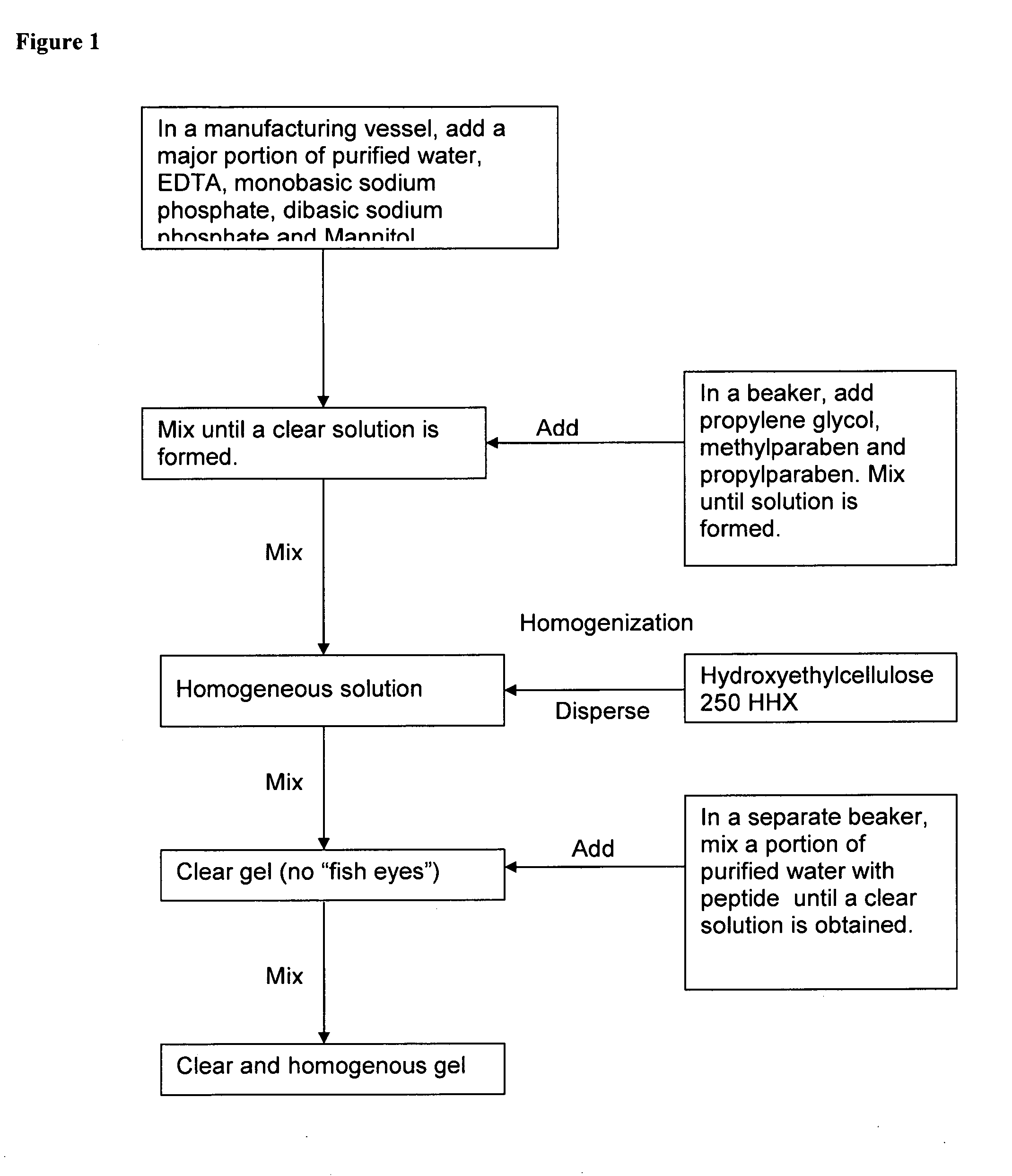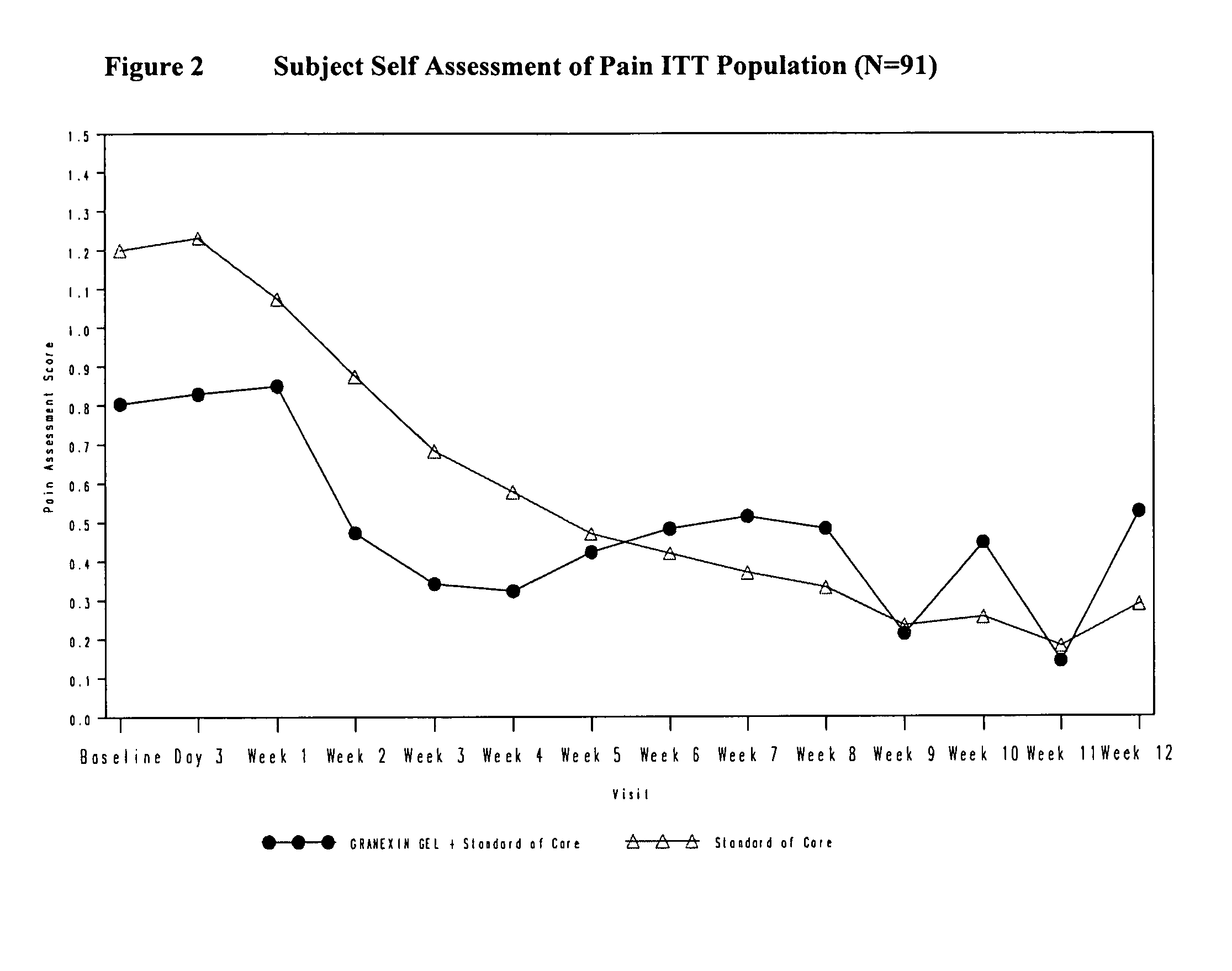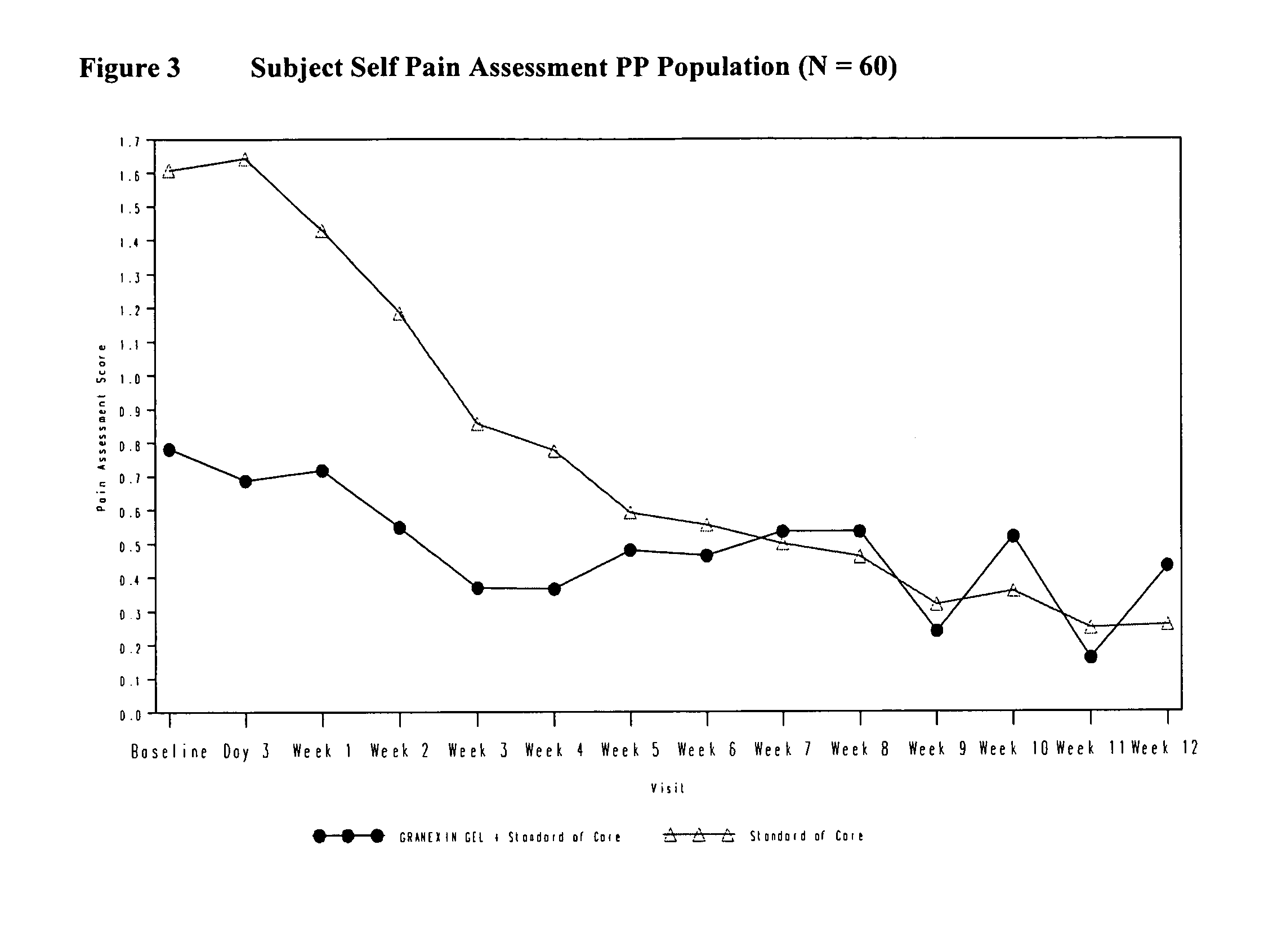Formulations and methods of use for alpha connexin C-terminal (ACT) peptides
a technology of c-terminal and peptide, which is applied in the direction of peptide/protein ingredients, drug compositions, aerosol delivery, etc., can solve the problems of not all of them working equally well in stabilizing, not all of them are suitable for treating or preventing such scarring, and the structure and function of complex tissues are rarely, if ever wholly restored, etc., to achieve the effect of improving the chronic wound, not inducing excessive side effects, and reducing symptoms
- Summary
- Abstract
- Description
- Claims
- Application Information
AI Technical Summary
Benefits of technology
Problems solved by technology
Method used
Image
Examples
example 1
[0123]The objective was to develop a stable, elegant and pourable gel in which the Active Pharmaceutical Ingredient (API) is in solution for wound healing purposes.
[0124]The major challenges encountered during formulation development were the selection of suitable stabilizers for the API (ACT1), and other excipients that are non-irritating for wound healing application. Studies were conducted to evaluate prototype formulations.
[0125]R&D Study Per Protocol #1062
[0126]The first study was conducted per protocol #1062. During this study, 6 prototype formulations were evaluated as outlined in Table 4. The purposes of the study were to select a proper pH range for the product and also to select a proper gelling agent. The API concentration used for this study was 0.072% which was the initial targeted product concentration. Phosphate buffers at pH 5, 6, and 7 and two gelling agents, Pluronic and Hydroxyethylcellulose (HEC) were evaluated. The quantity of API required for the formulations w...
example 2
R&D Study Per Protocol #1074
[0140]Based on the results from study #1062, additional prototype formulations based on formula 2414-15 were designed and evaluated per protocol #1074. During this study, 7 prototype formulations were prepared. The purposes of the study were to select a proper buffering system and antioxidants for the formulation. Five (5) antioxidants were evaluated: Mannitol, Methionine, Acetylcysteine, Lysine and Histidine. Two buffer systems were used: phosphate buffer at pH 6 and citrate buffer at pH 5. Glycerin (5%) was introduced into the new prototype formulations to provide some humectant property to the wound treatment topical gel. PEG 200 was also evaluated for its potential stabilizer effect. The compositions of the prototypes evaluated per study #1074 are listed in Table 7.
[0141]
TABLE 7Composition of Prototype Formulations per Study #1074Formula # 2414-Component (% w / w)18192021222326Peptide 328967 (ACT1)0.0360.0360.0360.0360.0360.0360.036Propylene Glycol1.01....
example 3
Treatment of Diabetic Foot Ulcer
[0149]A Phase II, randomized, prospective, double blind, parallel group, multi-center study was conducted to assess the safety and efficacy of ACT1 peptide in the treatment of diabetic foot ulcer.
[0150]Subjects in Group A received 100 μM of the ACT1 peptide formulation (i.e., Granexin™ Gel) in addition to standard-of-care treatment (SoC) compared to SoC alone in Group B. The total study duration for efficacy assessments was 12 weeks with additional 12 weeks follow up for safety evaluations. The study procedures were divided into three phases: Screening Procedures (Study Days: −7 and 0), Treatment Procedures (Study Day 0 through Study Week 12), and Follow-up Procedures (Study Months 4 through 6).
[0151]Subjects enrolled in the study may have had multiple ulcers but only one ulcer was considered as the target ulcer which was within the range of 4-1250 mm2 and was separated from other ulcers by at least 20 mm. According to the randomization schedule, subj...
PUM
| Property | Measurement | Unit |
|---|---|---|
| temperature | aaaaa | aaaaa |
| temperature | aaaaa | aaaaa |
| temperature | aaaaa | aaaaa |
Abstract
Description
Claims
Application Information
 Login to View More
Login to View More - R&D
- Intellectual Property
- Life Sciences
- Materials
- Tech Scout
- Unparalleled Data Quality
- Higher Quality Content
- 60% Fewer Hallucinations
Browse by: Latest US Patents, China's latest patents, Technical Efficacy Thesaurus, Application Domain, Technology Topic, Popular Technical Reports.
© 2025 PatSnap. All rights reserved.Legal|Privacy policy|Modern Slavery Act Transparency Statement|Sitemap|About US| Contact US: help@patsnap.com



